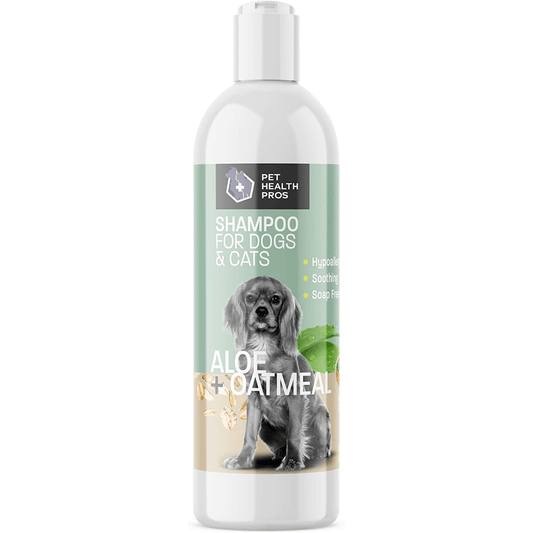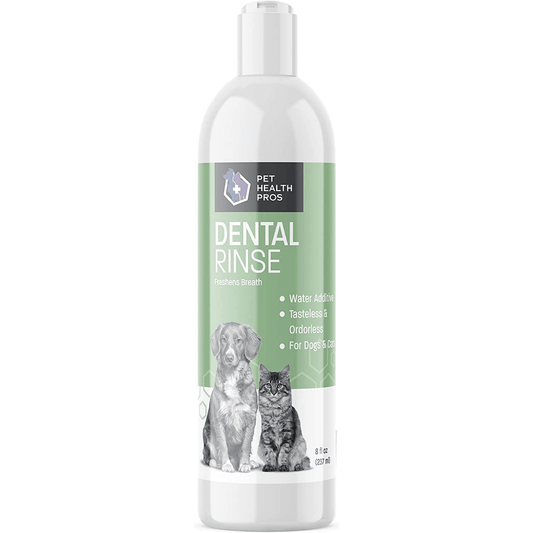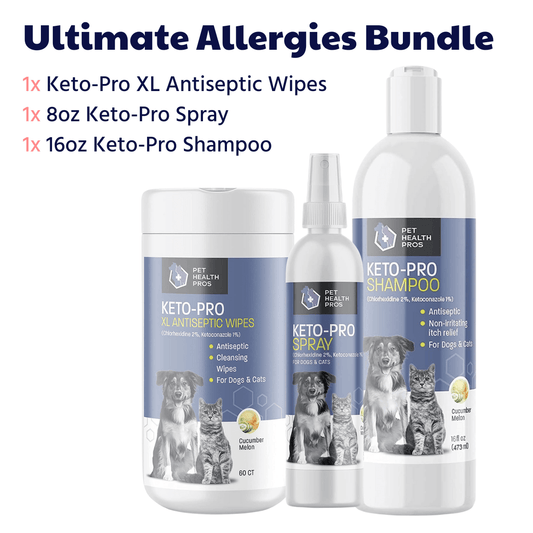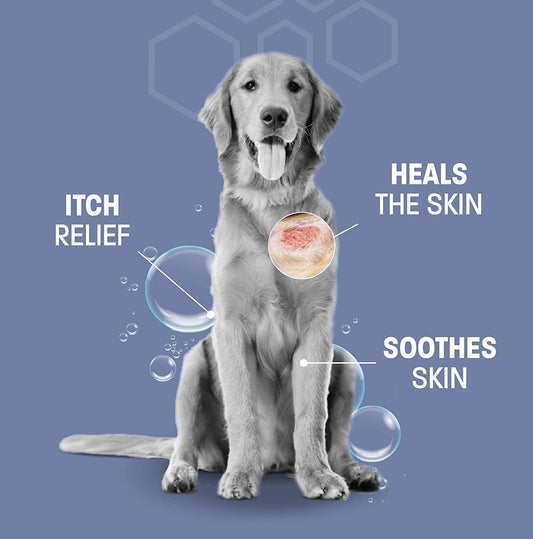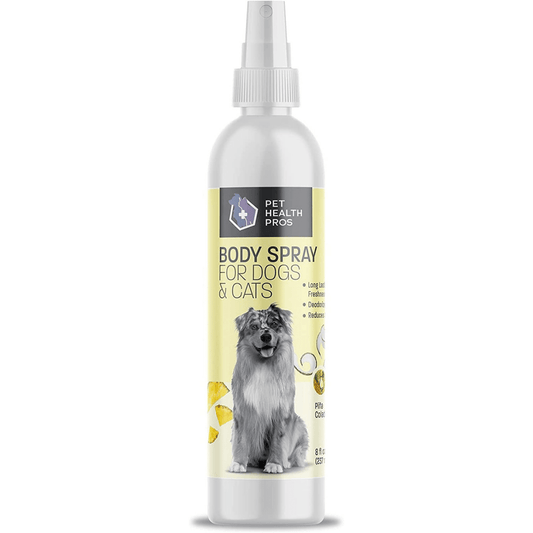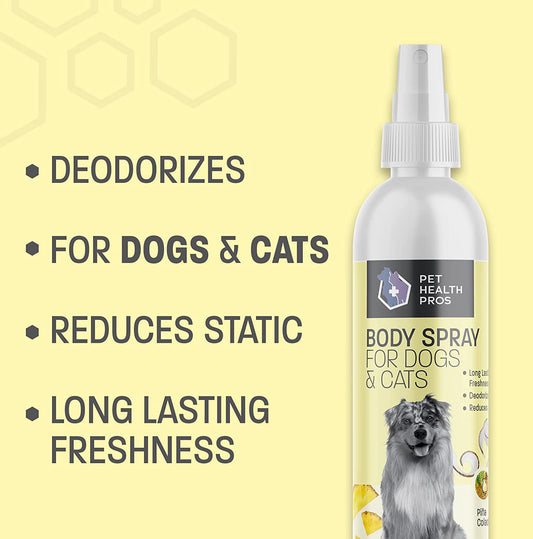If your dog loves to chew on everything, especially your furniture, you're not alone. Many dog owners face this challenge and are always on the lookout for solutions. While there are plenty of commercial sprays available, they might not always be the best choice for your furry friend. Making a homemade no chew spray for dogs is a simple and effective way to protect your belongings without using harsh chemicals. Plus, you probably already have most of the ingredients in your kitchen! Let's dive into how you can whip up your own spray and keep your furniture safe.
Key Takeaways
- Homemade sprays are a safe alternative to commercial products.
- Common ingredients include vinegar and citrus oils.
- Always test the spray on a small area first.
- Consistency is key—apply regularly for best results.
- Monitor your dog's behavior to ensure effectiveness.
Understanding the Need for a Homemade No Chew Spray for Dogs
Why Dogs Chew Furniture
Chewing is a natural behavior for dogs, often driven by curiosity, teething, or boredom. Puppies, especially, use their mouths to explore the world around them. However, when your furry friend decides that your sofa or table leg is a great chew toy, it can lead to frustration and costly damage. Understanding these motivations can help in managing and redirecting this behavior.
Common Ingredients in Commercial Sprays
Commercial no-chew sprays often contain bittering agents like denatonium benzoate, which is harmless but unpleasant to taste. These sprays are designed to deter dogs from chewing by making the furniture taste bad. However, they can sometimes contain chemicals that might not be ideal for all pets.
Benefits of Homemade Solutions
Creating a homemade no-chew spray allows you to control what goes into the solution, ensuring it's safe for your pet. Homemade sprays are often made from natural ingredients, which can be just as effective as store-bought options. Plus, making your own solution can be more cost-effective and customizable to suit your dog's preferences. Consider using ingredients like vinegar or citrus, which are both safe and effective deterrents.
Essential Ingredients for Making a No Chew Spray
Creating a homemade no chew spray for your dog is a practical and often more natural alternative to store-bought solutions. Let's dive into the essential ingredients you'll need to whip up a spray that keeps your furniture safe and your dog happy.
Natural Ingredients to Consider
When making your own no chew spray, it's important to use ingredients that are safe and effective. Here are some natural options:
- Vinegar: Its strong smell can deter dogs from chewing. Mix it with water to reduce the intensity.
- Citrus Juice: Dogs generally dislike the smell of citrus, making lemon or orange juice a great addition.
- Essential Oils: Some oils like eucalyptus or peppermint are known to repel dogs, but use them sparingly to avoid irritation.
Safety Precautions for Pets
While natural ingredients are generally safer, you still need to take precautions:
- Test a small area: Before applying the spray all over, test it on a small piece of furniture to ensure it doesn't cause any damage.
- Avoid sensitive areas: Keep the spray away from your dog's eyes, nose, and mouth.
- Observe reactions: Watch your pet's behavior after using the spray to ensure there are no adverse effects.
Making sure your homemade spray is safe for your pet is just as important as its effectiveness. Always prioritize your dog's health when trying new solutions.
Where to Source Ingredients
Finding the right ingredients is easy and often cost-effective:
- Grocery Stores: Most ingredients like vinegar and citrus fruits can be found at your local store.
- Health Stores: For essential oils, check out health or specialty stores.
- Online: Many websites offer a wide range of natural ingredients delivered right to your door.
By choosing the right ingredients and taking the necessary precautions, you can create an effective no chew spray that keeps both your furniture and your furry friend safe.
Step-by-Step Guide to Creating Your Own No Chew Spray
Gathering Your Materials
Before you start, make sure you have everything you need. Having the right materials on hand will make the process smoother. You'll need a spray bottle, water, white vinegar, and lemon juice. You might also want to add a few drops of essential oils like eucalyptus or peppermint, but this is optional.
Mixing the Ingredients
Once you've gathered your materials, it's time to mix them. Use a 1:1 ratio of water to white vinegar. Add about 2 tablespoons of lemon juice for every cup of liquid. If you're using essential oils, 5-10 drops should be enough. Shake the bottle well to ensure everything is mixed thoroughly.
Proper Storage Techniques
After mixing, store your spray in a cool, dark place. This helps preserve the ingredients and keeps the spray effective. Make sure the bottle is sealed tightly to avoid any leaks. It's a good idea to label the bottle with the date you made it, so you know when to make a fresh batch.
Creating a homemade no chew spray is not only easy but also a great way to protect your furniture without using harsh chemicals. With just a few simple ingredients, you can help keep your dog from chewing on things they shouldn't.
Applying the No Chew Spray Effectively
Best Practices for Application
When it comes to applying your homemade no chew spray, consistency is key. Start by identifying the most chewed areas on your furniture. These are your target spots. Before applying, make sure these areas are clean and dry to help the spray adhere better. Use a spray bottle for even distribution and apply a light mist over the surface. Avoid soaking it, as this can lead to residue buildup.
Frequency of Use
The spray's effectiveness depends on how often you apply it. Initially, you might need to apply the spray daily or every other day. Over time, as your dog learns to avoid these areas, you can reduce the frequency to once a week. Keep an eye on any changes in your dog's chewing habits, as this might require adjusting the application schedule.
Monitoring Your Dog's Reaction
After applying the spray, watch your dog's behavior closely. Some dogs may be more sensitive to certain ingredients, so it's important to monitor for any adverse reactions. If your dog seems uncomfortable or starts sneezing excessively, discontinue use immediately and try a different formulation. You can also consult Pet Genius for personalized advice on managing your pet's behavior and health concerns. Remember, the goal is to deter chewing without causing distress to your furry friend.
Using a no chew spray is just one part of a broader strategy to protect your furniture and ensure your dog's well-being. It's important to combine it with other methods like training and providing alternative chew options to achieve the best results.
Troubleshooting Common Issues with Homemade No Chew Sprays
Addressing Ineffectiveness
Sometimes, your homemade no chew spray might not work as expected. If your dog continues to chew despite the spray, it might be time to adjust your formula. Consider increasing the concentration of bitter ingredients like apple cider vinegar or citrus oils. Another option is to try a different combination of ingredients; what deters one dog might not bother another.
Dealing with Unpleasant Odors
A common complaint with homemade sprays is the smell. If the odor is too strong or unpleasant, it can be off-putting for both you and your dog. To combat this, try adding a few drops of essential oils like lavender or chamomile, which can help neutralize strong smells while being safe for pets.
Ensuring Pet Safety
Safety is a top priority when making your own no chew spray. Always ensure that all ingredients are non-toxic and safe for dogs. Avoid using ingredients like garlic or onion, which can be harmful to pets. It's a good idea to test a small amount on your dog's fur first to check for any adverse reactions. If you notice redness or irritation, discontinue use immediately.
Homemade solutions can be effective, but they require a bit of trial and error. Be patient and willing to tweak your formula to find what works best for you and your furry friend.
Additional Tips for Protecting Your Furniture from Chewing
Training Techniques to Discourage Chewing
Training your dog is a fundamental step in protecting your furniture. Consistency is key when teaching your dog what is off-limits. Use positive reinforcement techniques, such as treats and praise, to reward good behavior. Redirect their chewing to appropriate items whenever they start nibbling on something they shouldn't. Patience and persistence will help your dog learn the boundaries.
Alternative Chew Toys
Providing your dog with a variety of chew toys can prevent them from targeting your furniture. Look for toys that are durable and safe for your dog's size and chewing strength. Rotate the toys regularly to keep your dog interested. Some dogs enjoy toys that dispense treats, adding an extra layer of engagement.
Creating a Pet-Friendly Environment
A pet-friendly environment can significantly reduce the likelihood of your dog chewing on furniture. Ensure your dog has a comfortable space with their bed, toys, and access to water. Remove any tempting items that they might want to chew on, like shoes or remote controls.
Creating a dog-friendly zone in your home not only protects your belongings but also makes your pet feel more secure and happy.
By implementing these strategies, you can help protect your furniture and keep your home harmonious. Remember, understanding your dog's needs and providing them with appropriate outlets for their energy and curiosity is crucial for both their well-being and the safety of your household items.
Understanding Your Dog's Chewing Behavior
Identifying Triggers for Chewing
Dogs chew for various reasons, and understanding these can help address the behavior effectively. Puppies chew to relieve teething pain, while adult dogs might chew out of boredom, anxiety, or even as a way to explore their environment. Recognizing what triggers your dog's chewing is the first step in managing it. Common triggers include:
- Teething: Puppies go through a teething phase where chewing helps soothe their gums.
- Boredom: Dogs left alone for long periods might chew to entertain themselves.
- Anxiety: Separation anxiety or fear can lead to destructive chewing.
Behavioral Solutions
Once you've identified the triggers, you can work on solutions. Positive reinforcement is key. Reward your dog when they chew on appropriate items, like toys, instead of furniture. You can also use a no chew spray to deter them from biting furniture. Providing plenty of mental and physical stimulation is also crucial. Here are some tips:
- Interactive Toys: Give your dog toys that challenge them mentally and physically.
- Exercise: Ensure your dog gets enough physical activity to burn off excess energy.
- Training: Consistent training can help redirect chewing behavior to appropriate items.
When to Consult a Professional
Sometimes, despite your best efforts, your dog's chewing might persist. In such cases, consulting a professional trainer or veterinarian can be beneficial. They can provide insights into whether the chewing is a sign of a deeper behavioral issue or health problem. It's always better to seek help early to prevent the behavior from becoming more ingrained.
Understanding your dog's chewing behavior is not just about protecting your belongings; it's about ensuring your pet's well-being and happiness. Addressing the root causes of chewing can lead to a more harmonious relationship between you and your furry friend.
Dogs chew for many reasons, like boredom or stress. Understanding why your dog chews can help you find the right solutions. If you want to learn more about your dog's chewing habits and how to manage them, visit our website for helpful tips and products!
Wrapping It Up
So there you have it, folks. Making your own no-chew spray at home is not only easy but also a great way to keep your furniture safe from those curious canine teeth. With just a few ingredients, you can whip up a solution that works wonders. Plus, you know exactly what's in it, which is always a plus. Remember, consistency is key. Keep applying the spray regularly, and soon enough, your dog will learn to steer clear of those off-limits areas. Give it a try and see how it works for you and your furry friend. Happy pet parenting!
Frequently Asked Questions
What is a homemade no chew spray for dogs?
A homemade no chew spray is a natural solution you can make at home to stop dogs from chewing on furniture and other items. It uses safe ingredients to create a taste that dogs find unpleasant.
Why do dogs chew on furniture?
Dogs often chew on furniture out of boredom, teething, or anxiety. Chewing can also be a way for them to explore their environment or relieve stress.
What ingredients are safe to use in a homemade no chew spray?
Safe ingredients for a homemade no chew spray include apple cider vinegar, lemon juice, and water. These ingredients are natural and generally safe for dogs.
How often should I apply the no chew spray?
You should apply the no chew spray as needed, usually once a day or whenever you notice your dog starting to chew on furniture again. Consistency is key to effectiveness.
Can homemade no chew sprays harm my dog?
If made with safe, natural ingredients, homemade no chew sprays should not harm your dog. However, always monitor your dog for any adverse reactions and consult a vet if unsure.
What should I do if the spray doesn't work?
If the spray doesn't work, try adjusting the ingredients or concentration. You can also explore other methods like training or providing chew toys to discourage unwanted chewing.

